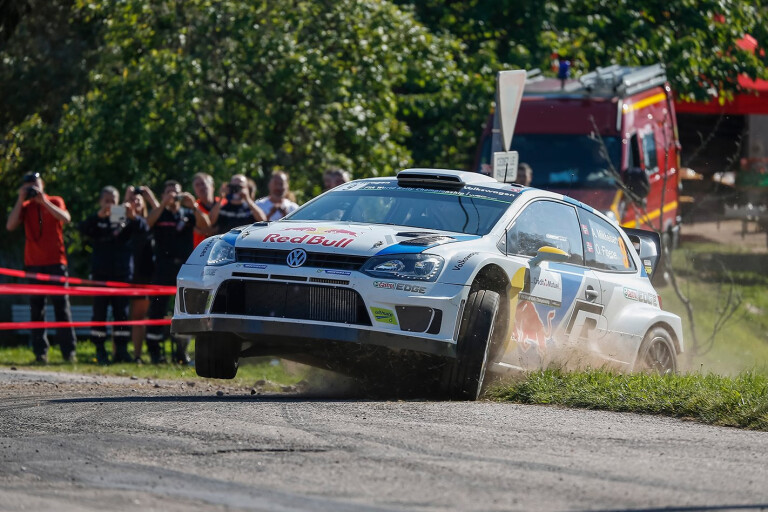
THE hills are alive with the sound of boozin’. Loud, loquacious Frenchmen and thick-necked Germans stand beer to beer, shouting unintelligibly and honking their air horns, giving the Rally of France the distinct, disturbing tone of a football riot. Europe, it seems, is not immune to the bogan hordes.
The less rotund among them are climbing trees and fences, wobbling on rocks or cramming onto jerry-rigged platforms made out of what look like primary school desks. A few metres behind them, stoically facing the other way, an OH&S person is wracked with sobs, sucking hard on his Gauloises.
A shriek of whistles and the approaching buzz-bang-rattle of a rally car being driven at 11-tenths crashes over the cacophony and a cheer goes up. Most of these unfeasibly keen punters have been standing here for at least two hours, watching nothing more than butterflies and beer wenches, and a huge cheer of released relief goes up.
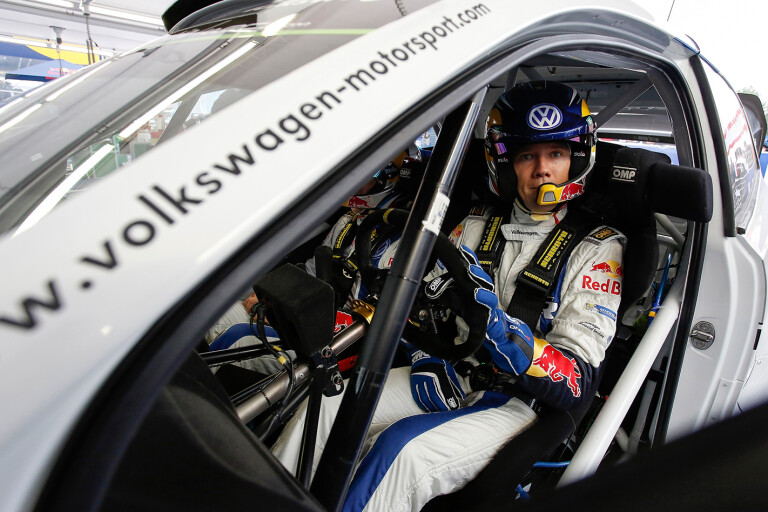
They know it’s only the “zero car” coming – the World Rally Championship’s version of a pace car, although it’s only supposed to be checking the course is clear rather than setting any kind of pace – but in a form of motor sport where hour upon hour of commuting, communing and standing in fields of cow shit is broken only by occasional flurries of activity, this is exciting.
The full rally Citroen DS zero car explodes into view, blurs past and suddenly drops a grenade of percussive, smashing and shattering noises as the deeply embarrassed driver clips the inside of a corner less than three metres away from us, bottoms brutally on a bump and bounces his car onto its roof. Clearly he thought he was setting the pace.
A Bronx cheer of deafening volume erupts and the crowd surges forward to get a look at the most embarrassed man on the planet for that particular minute.
Welcome, baffled foreigner, to the hills of northern France, host to the latest round of the WRC, a motor sport experience like no other, peopled by the world’s hardiest, most dedicated and utterly obsessive fans.

Watching mainstream forms of circuit racing live can be a challenge – you only get to see one or two corners, it doesn't take long to lose track of who's winning and your bum quickly goes numb on the hard plastic seats – but all of them are the equivalent of a bath full of supermodels compared with attending a rally event in Europe.
Punters think nothing of ditching their cars and walking four or five kilometres, with a stepladder strapped to their backs, into a field or forest to stand 12-deep and watch a rally car flash past before waiting two minutes for the next one. Two hours later, they run back to their cars and drive for an hour or three to get to the next stage, or, more realistically, the stage after that.
When the rally cars – which you’ll often see, excitingly, overtaking you in traffic as they transfer between stages – do stop to do their rapid-fire services, thousands of people turn up, with their stepladders, to watch and shout encouragement.
We’re here to ask the big questions; are they all bonkers, or is the WRC worth the effort?

Sabine Braucer, draped in a Sebastien Loeb flag and jumping up and down perilously close to a giant, hardened puddle of cow dung, is a typical French fan. A polite inquiry about her mental status draws a pitying smile before she waves her arm across the undeniably beautiful and verdant valley we’re standing in.
“Look at this, we are in nature, it is fabulous, no? And free, no one has to pay to be here, it’s so wonderful,” she beams. “I drive 100km today, then we walk five kilometres and wait here three hours for the cars. It is my passion, thanks to Sebastien Loeb. We all loved him, but we still come now he’s gone, because… passion.”
Passion, nature and Loeb (arguably the greatest rally driver of all time, winner of a staggering nine World Rally Championships in a row and a French deity); these are three words that come up a lot.

The adventure of watching a rally, heading out into the wilds with your friends, or, more enjoyably, climbing up through the eye-wateringly beautiful town of Riquewihr (rated one of the most beautiful villages in France, which is saying something) to stand among grape vines in the sunshine, is a big part of the attraction.
But rally fans take the sport intensely seriously as well, like Christophe Helbert from Obernai, who is camped on the same hill as Sabine, with about 40 of his closest friends.
“F1 fans, they don’t get it, they say there’s no overtaking in rally, but how much overtaking do they see?” he says. “The best of Formula One is qualifying, yes? And in rally, every stage is like this – driver against clock, flat out, as fast as they can. Fantastique.
“And rally has the best drivers. Formula One is easy; you learn the track and you know it, it’s always the same. This is so much more risk, you just don’t know in rally. There is one who tries, Kimi Raikkonen; he tries rally, he crashes a lot, he hits a lot of trees, it’s very different.
“Rally is the best. Formula One is good, DTM is okay, but at rally you can camp, you are here, it is very social, and it’s free. It’s a real fan thing.”
Those fans like to get involved in weird and frankly mental ways, too.
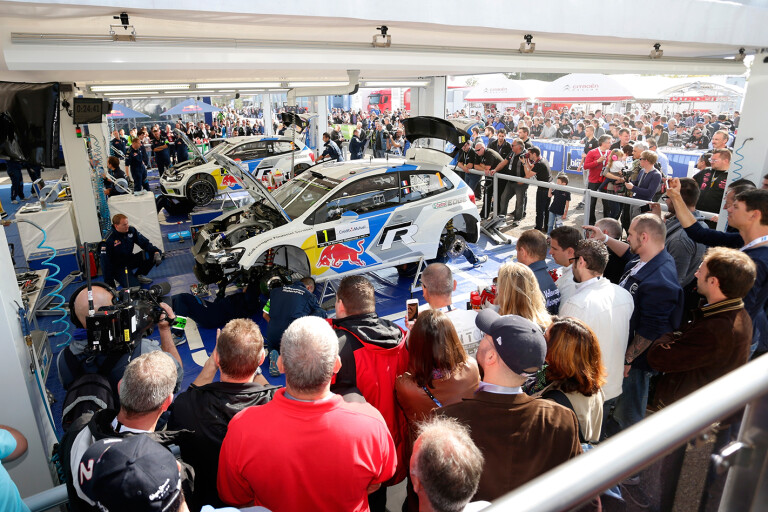
Luis Moya now works for the supremely dominant Volkswagen rally team – home to the new French world champ, Sebastien Ogier, and also his two closest competitors, Finland’s Jari-Matti Latvala and Norway’s Andreas Mikkelsen – but he used to be co-driver for the legendary Carlos Sainz in the highly competitive 1990s. And he can remember spectators trying to touch speeding cars as they went past, and some other hilarious tricks.
“Yes, rally fans are… special. Every year in Rally Monaco, on the Col de Turini, the fans push snow on the road during the stage,” he explains, eyes rolling, head shaking. “They wait for their favourite drivers to go past, then they do it, stand back, watch what happens. They think it’s funny. We do not think it’s funny.”
Spend some time talking rally with Moya and it’s hard not to be blown away by the sport he loves.
He is in awe of the mechanics, for example, who operate under similar time pressures as the drivers, bringing another dimension to the sport, and one the punters love to watch. Service breaks during the day can be as short as 20 minutes and, at the end of a long, hard day of car-breaking competition, they can have as little as 45 minutes to rebuild and repair.
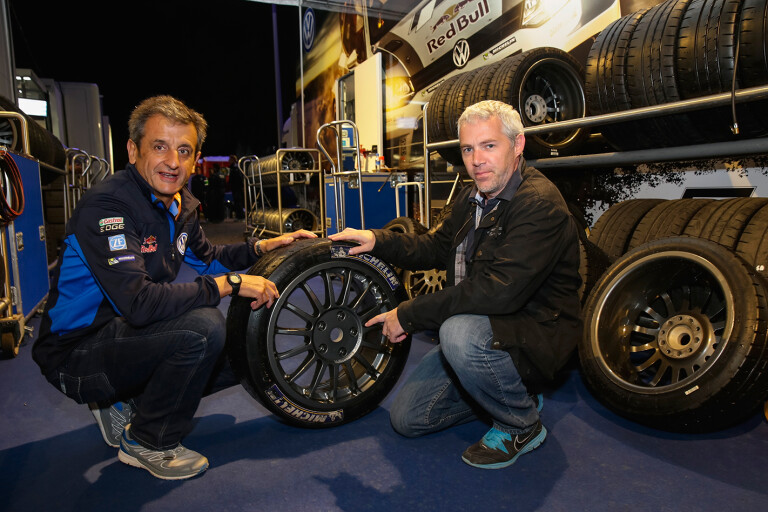
“These people are incredible; they can change a diff in eight minutes, or replace the whole gearbox in 12 minutes,” he says. “In Sweden it was minus-20 degrees and I watched them do a gearbox in 14 minutes; the cold slowed them down a bit.”
The punishment on cars, and rubber in particular, is incredible. A WRC car must weigh 1200kg, but they have to put in ballast to ensure they hit that mark at weigh-in, because a single rally tyre can lose three kilograms in weight over a few gravel stages.
As with all forms of motor sport, big efforts have been made in recent years to make the WRC cheaper, so teams now take only 75 tyres per car for each event. In Moya’s day, Pirelli would bring 1000 hoops per vehicle. Cars chewed a lot more rubber then because they were so much more powerful; well in excess of 400kW, versus about 230kW today.
“Yes, our cars used to blow up a lot, and people decided they weren’t safe, but the modern ones need to be faster, I think, at least another 50 horsepower,” Moya says.
“Today’s cars are much easier to drive; there’s no turbo lag for a start. Our cars, all the power was at 4500rpm and above, which made them very tricky.
“But the biggest evolution in rallying is suspension. It’s incredible. We used to go over a jump and the car would bounce at least three times, hard, and then settle, but a modern rally car just bounces once, and then sits flat. They’re so much better.”
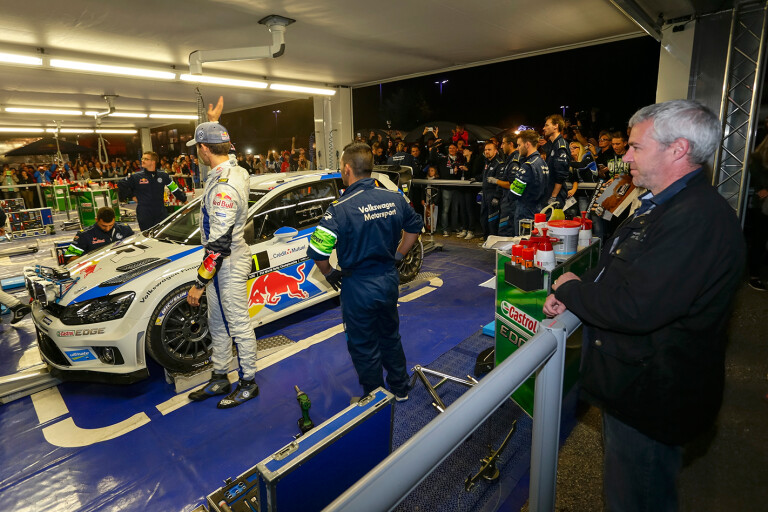
He’s right. Close up, these machines are incredible to watch, coming into corners at impossible pace, slip-sliding their way through, then rocketing away while coping with jumps and lumps with ease.
As good as it is live, however, I still think the best way to watch rallying is to tune into the in-car vision, which really gives you an appreciation of what incredible work the drivers are doing.
It’s an argument much debated, whether rallyists really are the best steerers, although the fans are certain. I tell Moya that a Sauber engineer once told me an F1 driver is only worth about 20 to 30 percent of his car’s performance, and ask what percentage a rally driver would make up.
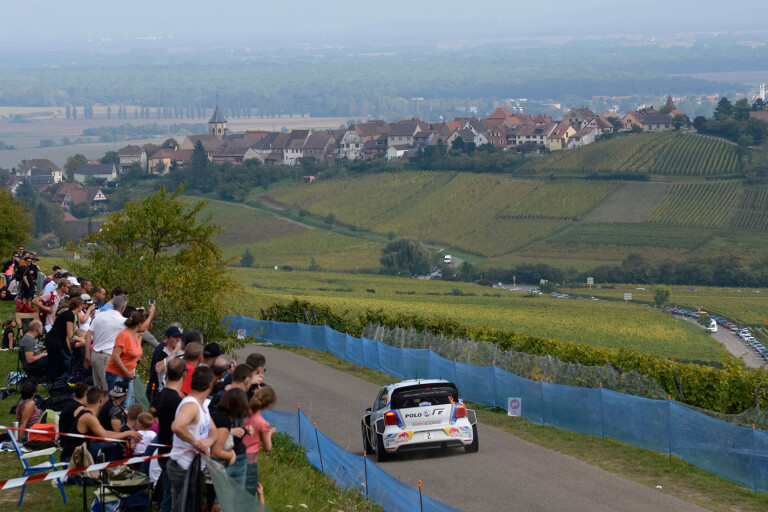
“It would be difficult to say exactly, but it has to be much higher,” he says. “I know in F1 Fernando Alonso is one of the best – and not just because I’m Spanish – but if he doesn’t have the best car, he doesn’t win. But in rally if you don’t have the best car and there is a change in conditions, with gravel, snow, rain, a driver can make all the difference and show their potential.
“I think the talent is probably the same, but if you come from F1 to rally… they used to know by heart where they are going, but it’s different. You have to write pace notes, you have to learn to drive from them, you have to listen to the guy next to you telling you, you have to trust him.
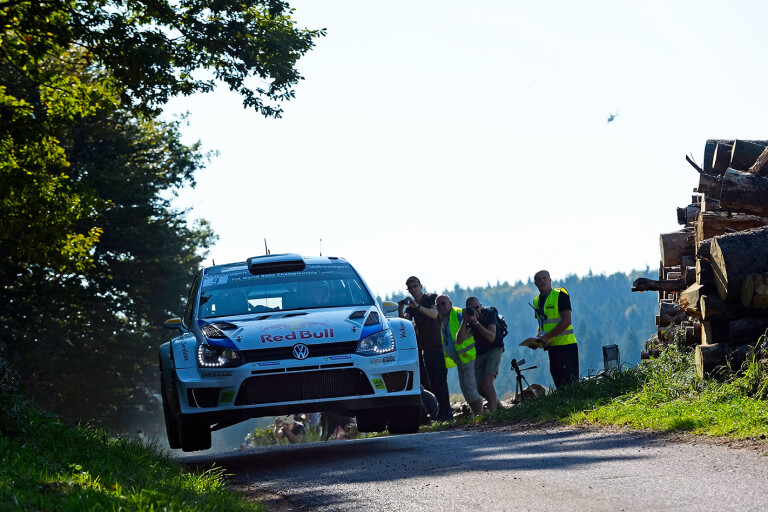
“It’s a lovely thing. The nicest thing ever in my whole life was to sit in a rally car and compete with Carlos. When you do the homework well, you always pass the exam. But the homework is a nightmare, the testing and the pace notes and the practice. But once I was in the rally car with Carlos, oh, that is a very enjoyable situation. You are on a road that is closed for yourself, just trying to be the fastest, and the combination between driver and co-driver, I think it’s the best example of teamwork in the world of sport, it’s absolutely marvelous.”
Back on the sun-dappled, chaotic hillside, the wreckage of the zero car has been dragged away and the WRC’s best are flying past us, each of them struggling with the same tricky corner in noticeably different and never-less-than-breathtaking fashion. Another four cars will be smashed to bits in the same spot that afternoon, and the crowd couldn’t be happier.
After three days of trailing the rally circus across northern France, as we watch dominant VW celebrate yet another victory (Latvala this time) with a bunch of hooting, honking and delirious fans, it’s hard not to be impressed by the passion.
It may be bonkers, but rallying is worth losing your mind over.
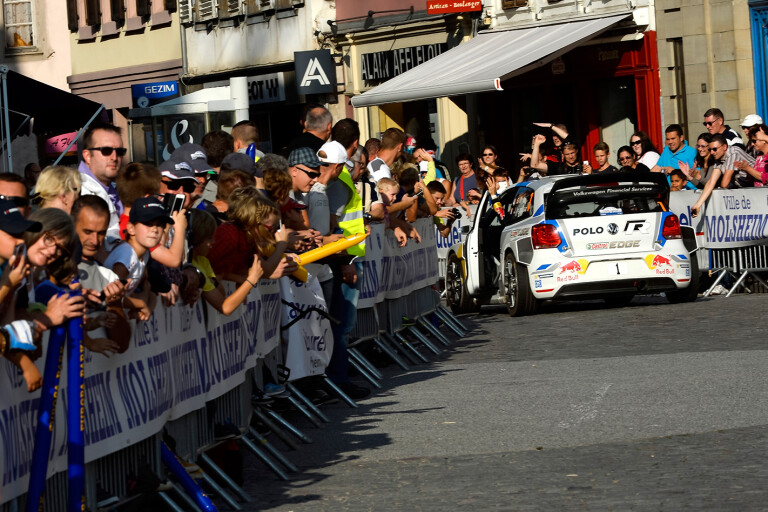
SEB BASTION
WANT your unborn son to grow up and be a racing car driver? Here’s a tip; call him Sebastien.
Replacing Seb Loeb – French, fantastically successful, all the personality of cardboard – with Sebastian Ogier, also French, not quite a legend yet, is proving a hard sell with the fans.
“It’s very upsetting, it’s not the same without Loeb,” rally nut Jeremie Billiot tells us, crestfallen. “We are French and we love the rally because of him, but now with Ogier it’s not the same. It takes time to be popular, I guess, but I don’t think he will ever be the same.”
Some would suggest that Loeb’s dominance was so total, and lengthy, that he damn near killed the sport, but not the French.
“It didn’t hurt the sport, him winning all the time. He was so popular that people were always interested; how could you not love watching him win, he was the greatest,” Billiot insists.
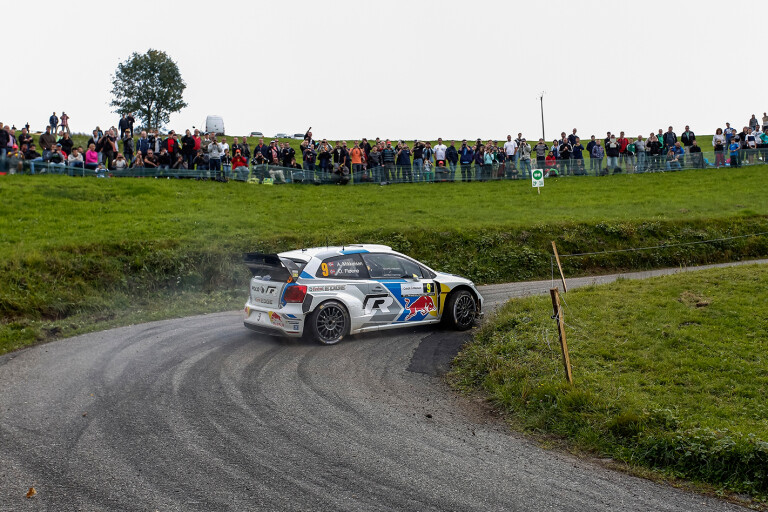
Being Spanish, Luis Moya is more circumspect.
“When you have a guy who is winning nine years in a row, you have a lot of fans in France, but not so much everywhere else,” he says.
“Was he the greatest ever? When you look at the statistics, there is no doubt about it … but there was no one else good enough to take him on. If you look when I was competing with Carlos [Sainz], there were seven world champions in those years. It’s difficult to compare [eras], but I have the feeling that Sebastien Loeb would not have been able to win so much in our time.”
Ogier won his first title in 2013 – as yet another Seb (Vettel) snared his fourth successive F1 title – and cruised to victory again last year, but casual fans will hope he’s not about to start yet another Seb-athon in the sport.

COMMENTS